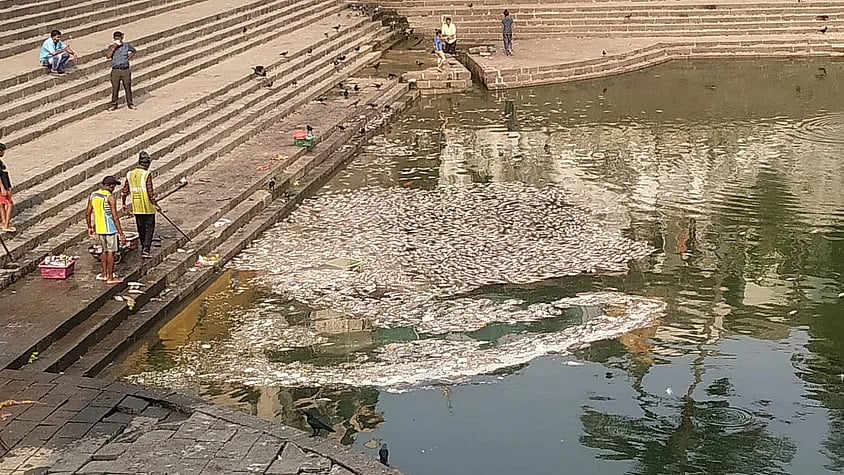Mumbai: Severe oxygen deficiency may have led to fish deaths at Banganga Tank in Malabar Hill, says BMC report
The BMC report stated that the rate of turbidity of the main tank water along with the biological oxygen demand (BOD) level was found to be high

Severe oxygen deficiency may have led to fish deaths at Banganga Tank | Salman Ansari
Over 20 days after thousands of fish were found belly up in the city’s historic Banganga Tank, a probe by the Brihanmumbai Municipal Corporation (BMC) has revealed that a severe oxygen deficiency in the water could have likely been the cause of death.
As per the civic body's report on the chemical analysis of the water stated that its colour had turned light green due to the presence of toxin components.
The BMC report, which was prepared on April 29, stated that the rate of turbidity of the main tank water along with the biological oxygen demand (BOD) level was found to be high as there was a presence of oil, grease and solid components in the water.
A high BOD indicates a deficiency in the level of oxygen in the water
Lakhs of fish were found dead and floating at the Banganga tank in April due to water pollution. This is considered to be an odd scenario in April as there are no festivals, especially the Pitrupaksha rituals, which are the main reason for the death of the fishes every year.
According to the locals, during the Pitrupaksha rituals, people put a large quantity of food in the water as a symbolic offering to their ancestors. This leads to the death of fish. There is no clear policy of the government regarding it.
During the lockdown, the fish at Banganga had survived during Pitrupaksha as citizens were not allowed to venture outside.
ALSO READ
RECENT STORIES
-
-
-
-
-